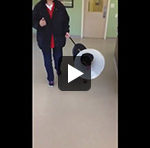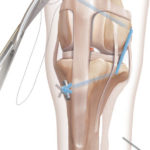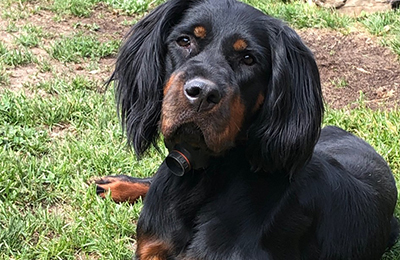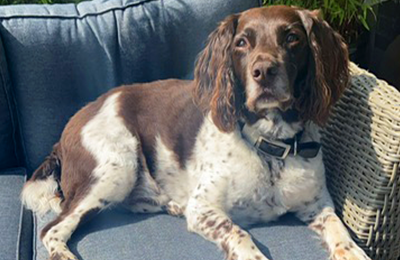By Christina Holbrook, DVM
How long will it take for my dog to be able to run again? What are the most common complications with this surgery? What would you do if it were your dog, doc? These are just a few of the questions that I answer every day when discussing the diagnosis and treatment of cranial cruciate ligament (CCL) disease in the canine patient. “Daisy” Brown, a 7-year-old female spayed black Labrador retriever, was no exception to this when her owner brought her in for a lameness exam one warm summer day in August 2012.
Daisy’s history and physical examination findings were not out of the ordinary for a dog with cranial curciate ligament (CCL) disease. For several weeks, it seemed as though Daisy was just “slowing down” according to the owner. Daisy would limp and appear “stiff” on her right hind leg, especially after rough housing with her litter mate. Radiographs and physical exam findings confirmed the suspicion of a rupture of her right CCL as well as a tear of her meniscus.
After thoroughly explaining Daisy’s diagnosis as well as all available treatment options with the owner, the final and most important question came, “What would you do if it were your dog, doc?” Given the multitude of surgical treatment options available for CCL disease, this can be quite a challenging question for many veterinarians to answer.
Thankfully, in Daisy’s case, there was a procedure, which she qualified for, that was proven to be minimally invasive, affordable for the owner, and carried a low risk for catastrophic post-surgical complications.
“TightRope® CCL fixation was developed to address my strong concerns about the relative safety, efficacy, and availability of the surgical treatments for CCL disease in dogs at that time,” said James L. Cook, DVM, PhD, DACVS . “Osteotomies had become the most popular CCL treatment among surgeons. While this treatment typically results in good outcomes (I had performed over 1,200 myself by that time), challenges included the invasive nature of the procedure, the number and especially the types/severities of complications, the financial costs, and accessibility to experienced surgeons. This drove me to try to find a surgical treatment option that was safer, as or more effective, less costly and more feasible for veterinary practitioners to perform well, allowing hundreds of thousands of dogs diagnosed with CCL disease each year to be effectively treated.”
Daisy is now over 2 years post-op from her knee surgery and based on routine recheck examinations and history obtained from the owner, she has made a full recovery.
“Again I can’t thank you enough for the excellent work that you did with Daisy’s surgery,” said Daisy’s owner Michelle Brown. “It was a very worthwhile investment for the dog that absolutely loves to play fetch! It has definitely made her quality of life as good as it can get. She will be 10 in May but still acts like she’s 2.”
The TightRope and Mini TightRope CCL implants continue to help more than 100 animals per year at our hospital.






